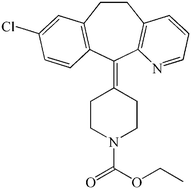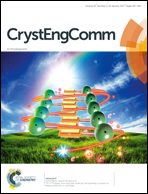Crystallization and relaxation dynamics of amorphous loratadine under different quench-cooling temperatures†
Abstract
In this paper, four amorphous samples of loratadine were prepared by quench-cooling the melted drug at different temperatures. With these samples, the crystallization tendencies were tested by powder X-ray diffraction (PXRD), and non-isothermal cold crystallization kinetics was investigated by using differential scanning calorimetry (DSC) and the molecular dynamics both in super-cooled liquid and in glassy states was analyzed by using broadband dielectric spectroscopy (BDS) at a temperature range from 213 to 393 K. From the PXRD results, it was established that the four amorphous loratadine samples were apt to crystallize at a temperature below the glass transition temperature. From the DSC results, it was found that the non-isothermal crystallization mechanism of these four loratadine forms was similar. However, the fast crystallization tendency (low physical stability) was also observed for the amorphous loratadine which was obtained at a low quench-cooling temperature. The tendency was analyzed based on the BDS results which demonstrated that rapid molecular mobility could generate a low physical stability and was closely related to Johari–Goldstein relaxation. These results suggested that loratadine had a weak frustration against crystallization and its physical stability was affected by the quench-cooling temperature. This study laid a foundation for choosing the right technique to prepare the amorphous form of loratadine and improving its physical stability.


 Please wait while we load your content...
Please wait while we load your content...